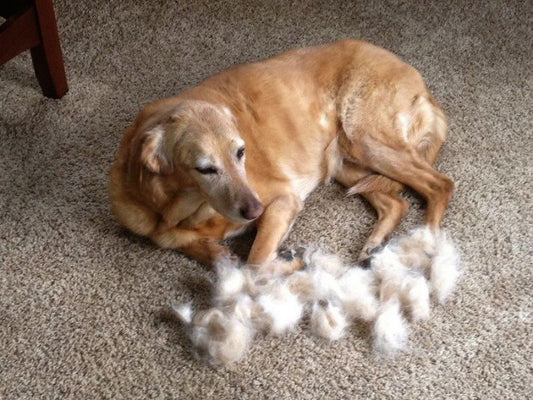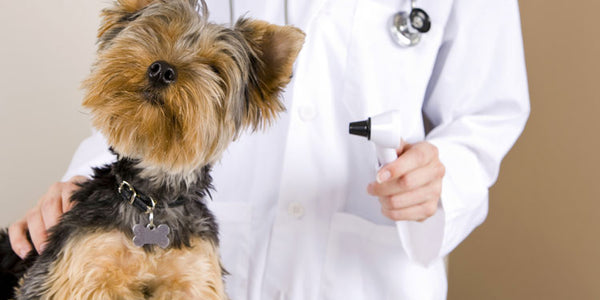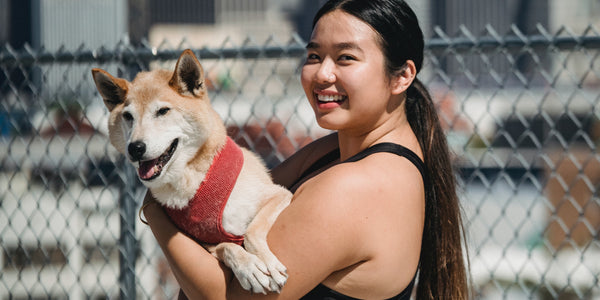Who doesn’t love a fluffy fur baby with a beautiful, thick coat? While medium to long-haired dog breeds like Huskies, German Shepherds and Saint Bernards are loved by all, those who own them know that with their cuteness comes their shedding – and a lot of it!
While nearly all dogs shed, the amount of loose hair they usually have depends on the breed. Nevertheless, it can be very frustrating to find yourself, your clothes and your furniture covered in dog hair, even after regular house cleaning! Many dog owners find themselves irritated because they fail to understand why their dog sheds so much, and whether there is something they can do to mitigate the problem.
Here’s a thorough guide on why dogs shed, and the best ways to manage the hair storm.
Why do dogs shed?“Shedding is natural; ‘non-shedding’ is a misconception.”
Genetics – For one, it’s absolutely natural. Shepherds usually shed a lot while Terriers shed much less; it is merely a case of different genetics. A dog’s fur is meant to control body temperature as well as provide protection to the skin. It grows in cycles, with three main periods: growth, neither growth nor shedding, and shedding. When the hair has stopped growing for a while and newer hair starts to emerge, older hair naturally becomes loose and starts to shed. In some dogs, the cycle happens yearly or every six months, while some may repeat it every month!
Seasons – In some parts of the world unlike Singapore, dogs experience seasonal shedding, and tend to renew their coat in the fall and the spring. However, some dogs experience around-the-year shedding in many countries, which often becomes a reason to worry for dog owners as they vacuum up loose hair.
When should I start worrying about shedding?
It is indeed very difficult to know whether your dog’s shedding is normal or excessive. The best way to go about it is to research your dog’s breed and know how much they should be shedding. If it seems to be too much, you might want to look into other reasons you have to deal with so much hair. As it turns out, excessive shedding can often be attributes to health problems. Here are some reasons your dog may seem to shed more than usual.
Allergies – Sudden and undue hair loss might be a symptom of al allergy. Watch out for other signs, like abnormal itching. Since different dogs are allergic to different things, it can be rather difficult to pinpoint the issue. From the weather to a certain toy to a food item, it could be anything. However, by observing recent changes in your dog’s diet as well as environment, you can use the method of elimination to find out what the problem might be.
Hormonal issues – If their fur seems to fall a lot along with being dry, patchy and easy breakable, it might be signifying an underlying hormonal issue. The most common hormonal issues seen in dogs are over and underproduction of oestrogen/testosterone, as well as thyroid problems. Fortunately, these problems are easily curable by medication.
Food intake – The coat of your dog reflects their diet intake; a dog with a healthy, shiny coat with a regular amount of shedding signifies a balanced diet, while a dead-looking coat with unwarranted shedding means your dog may be lacking proper nutrients. This often happens when dog owners go for certain cheaper brands of food that seem to promise balanced nutrition. However, dog food is not an area where a compromise should be made; top of the line dog food brands may be pricey, but it will make sure your pup stays healthy and happy. Read more on how to choose the best dog food.
Skin problems – Dogs are prone to skin issues like rashes, fungal infections, dermatitis, as well as fleas, mites and lice. While the former problems will need medication, the nasty insects are, luckily, easier to deal with. If your dog catches these from another dog or from playing in a dirty environment, it will immediately cause the fur to become patchy. You will also see scabs on the skin, matted hair and a lot of shedding. Luckily, these conditions are treatable with one-time sprays and flea shampoos that can completely eliminate the problem. It then takes one-two weeks for the coat to return to normal.
Stress – Yes, just like humans suffer from skin problems and hair fall when they are stressed and anxious, so do dogs. Look for changes in the environment. If the shedding comes just after you moved, introduced a new pet in the house or made another major change, chances are your dog is stressed and needs some time to relax and feel loved. Stress might also come from illness and major medical procedures, and will more often than not go away with some pampering and reassurance.
How to diagnose abnormal shedding?
While these issues can be difficult to spot and separate, there are some symptoms that can separate ‘fur loss’ from ‘shedding’, with the former being an indicator or an underlying problem. Look out for the following symptoms your dog might be exhibiting along with what looks like abnormal, more than usual shedding.
Balding spots – If your dog is experiencing fur loss due to a medical problem, the hair will not fall evenly, but in specific spots. Look for areas that look less dense than others. If you can spot uneven fur, the shedding is not normal.
Poor coat quality – Normal shedding does not affect the coat quality, so if hair loss comes with a dry and dull coat, it might not be normal. Healthy dogs have a shiny coat that is even and soft to touch, even when they are losing hair as per routine.
Clumpy hair loss – When a dog loses hair normally, it comes out in individual strands. If you’re a dog owner who has had to vacuum hair off of furniture and roll it off of clothes, you know you have to really get in there to get all those separate hairs. However, if your dog is losing hair in clumps, there is a problem to be looked into.
Tenderness – If your pet suddenly started losing hair and also seems to be reluctant to be touch, there might be a skin problem they are suffering from. Resistance to being touched or petted signifies tenderness, which never comes with normal shedding.
Of course, it is advisable that you consult your vet to get a professional diagnosis and make an informed choice. You know your pet best so if you see a change in the pattern, do not hesitate to get a professional opinion.
How To Manage Shedding?
It is first important to understand that you can’t ‘prevent’ normal shedding; you can only manage it. Fortunately, there are several products out there to save you from having to fret over everything you own being covered in pet hair.
There are many effective de-shedding tools to help you out.
Products for your dog
First off, you need to make sure you are deshedding your dog properly. Grooming is important because when it isn’t properly done, that is when you find hair everywhere. If you remove the loose hair while grooming, however, hair in other places is minimized.
The best way to manage deshedding is to use a reliable grooming brush, like the Furminator Deshedding Tool. It is important to make sure that you brush your pet every single day, and twice a day for heavy-shedders. It takes some work, but it will save you from a lot of cleaning! You can also make the process easier with shed control or deshedding shampoos and conditioners, such as Tropiclean Deshedding Lime & Coconut Pet Shampoo and Tropiclean Deshedding Lime & Cocoa Butter Pet Conditioner.
Products for you
It is only natural that you still see some fur on your clothes or on carpets and upholstery. For this, you can use a fur remover that uses sticky sheets to remove hair in hard-to-reach places on your furniture.
While it can indeed be frustrating to deal with, proper and regular management ensures that you and your pet stay clean and happy!



